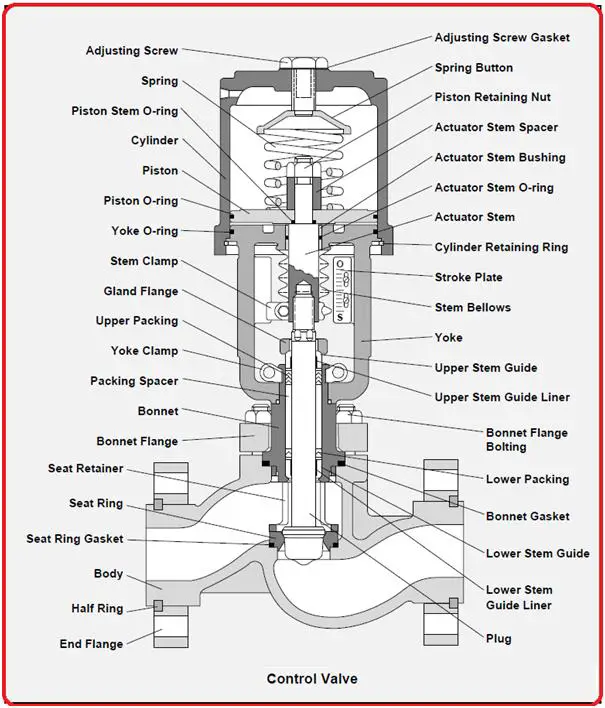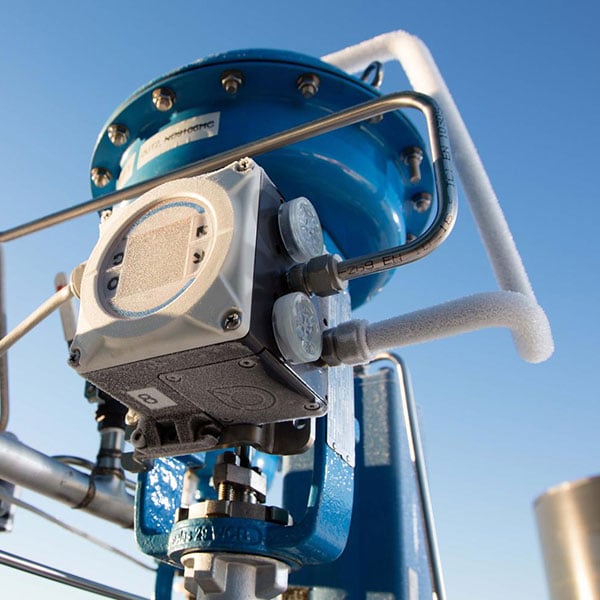Selecting the Right Control Valves: An Overview to Ideal System Efficiency
Selecting the Right Control Valves: An Overview to Ideal System Efficiency
Blog Article

Maximize Energy Cost Savings and Comfort With Advanced Building Automation Controls
In the world of modern architecture and facility administration, the integration of innovative structure automation regulates stands as a critical development. The merging of technology and sustainability has birthed a brand-new age where energy effectiveness, comfort optimization, and functional streamlining are no much longer remote desires but possible truths. By harnessing the power of automation, structures can adapt, react, and progress in manner ins which were once unbelievable. The capacity for significant energy cost savings and improved convenience is not just a guarantee but an opportunity waiting to be satisfied. This paradigm change in building administration holds the key to unlocking a world where ecological conscientiousness and resident wellness sympathetically exist together within the walls of our frameworks.
Energy Effectiveness Conveniences
Energy effectiveness advantages can significantly minimize energy consumption and operational costs in structures. By applying energy-efficient practices and modern technologies, building owners and drivers can attain substantial financial savings while also contributing to ecological sustainability. Among the main benefits of improving energy effectiveness in buildings is the reduction of energy bills. Energy-efficient systems, such as advanced building automation controls, can optimize using resources like lighting, heating, and air conditioning, bring about reduced power expenditures gradually.
Additionally, enhanced power performance can lengthen the lifespan of building equipment and systems. By operating a lot more successfully, heating and cooling systems, lighting fixture, and various other structure elements experience less damage, resulting in decreased upkeep and replacement prices. Furthermore, energy-efficient structures commonly command higher building worths and rental rates, giving long-term monetary advantages to owners.
Additionally, energy efficiency can improve resident convenience and productivity. Properly controlled interior settings with optimum lighting and thermal problems create a more helpful and pleasant work space, leading to improved worker contentment and efficiency. On the whole, the power efficiency benefits connected with innovative structure automation controls are multifaceted, incorporating price financial savings, environmental stewardship, and occupant health.
Boosted Comfort Control
Enhancing comfort control in building environments requires a sophisticated integration of advanced automation systems for ideal occupant well-being. By making use of sophisticated building automation controls, centers can customize the interior environment to meet the details requirements and preferences of residents. control valves.
By integrating these advanced controls, buildings can not just boost convenience yet also enhance power effectiveness by maximizing system operations based on real tenancy and usage patterns. Ultimately, focusing on resident convenience via advanced automation systems leads to a much more satisfying and much healthier indoor atmosphere.
Functional Efficiency Improvements

Furthermore, the execution of real-time monitoring and analytics devices makes it possible for building drivers to identify energy inadequacies and operational anomalies promptly. By constantly keeping track of power use patterns and system performance metrics, modifications can be made in real-time to maximize energy usage and make certain peak operational efficiency. control valves. Furthermore, incorporating demand action approaches into building automation controls can even more improve operational effectiveness by dynamically readjusting power use based on grid problems and prices signals
Indoor Environment Optimization
Reliable interior environment optimization is a fundamental element of building automation controls, making sure owners' convenience and health while optimizing power cost savings. By using advanced sensors and controls, building automation systems can continuously keep an eye on and adjust temperature, humidity levels, air quality, and ventilation to create an optimal indoor environment. Keeping regular and comfy problems not just improves passenger satisfaction but likewise increases performance and total health.
Interior climate optimization also plays a vital function in power performance. By fine-tuning home heating, cooling, and ventilation systems based upon real-time data and tenancy patterns, constructing automation controls can dramatically minimize energy intake - control valves. Implementing approaches such as demand-controlled ventilation and thermal zoning can help lessen energy waste while making certain that each location of the building obtains the needed conditioning.

Lasting Setting Development
Building automation controls not only enhance indoor environment problems for energy efficiency and owner comfort but likewise lay the structure for creating a sustainable environment with strategic administration of sources and systems. By incorporating advanced building automation technologies, such as sensing units, actuators, and smart software, facilities can check and change energy use in real-time to minimize waste and lower their carbon impact. These systems allow predictive upkeep, recognizing potential issues prior to they intensify and their website maximizing tools efficiency to enhance long life and effectiveness.
Moreover, lasting environment creation prolongs beyond energy monitoring to include this article water preservation, waste decrease, and interior air quality renovation. Building automation controls can control water use, spot leaks, and ensure appropriate waste disposal techniques, adding to general sustainability efforts. In addition, by managing and keeping an eye on air flow and filtration systems, these modern technologies enhance occupant health and efficiency while decreasing energy usage associated with a/c procedures.
Conclusion
In final thought, progressed building automation regulates offer considerable advantages in regards to power savings, convenience control, functional efficiency, indoor climate optimization, and producing a lasting setting. By carrying out these controls, buildings can accomplish ideal efficiency while lowering energy usage and boosting owner comfort. It appears that using sophisticated automation innovation is crucial in enhancing building performance and creating a more sustainable future.
Power efficiency benefits can significantly decrease energy usage and operational prices in structures. On the whole, the power performance advantages linked with advanced building automation controls are multifaceted, encompassing cost savings, ecological stewardship, and owner well-being.
In addition, including need feedback techniques right into visit this website building automation controls can further boost functional efficiency by dynamically changing energy use based on grid problems and pricing signals.
Structure automation manages not only maximize interior climate conditions for power efficiency and owner comfort but also lay the structure for creating a lasting atmosphere through critical monitoring of sources and systems.In conclusion, progressed building automation manages offer significant benefits in terms of energy cost savings, comfort control, operational effectiveness, indoor environment optimization, and creating a lasting environment.
Report this page